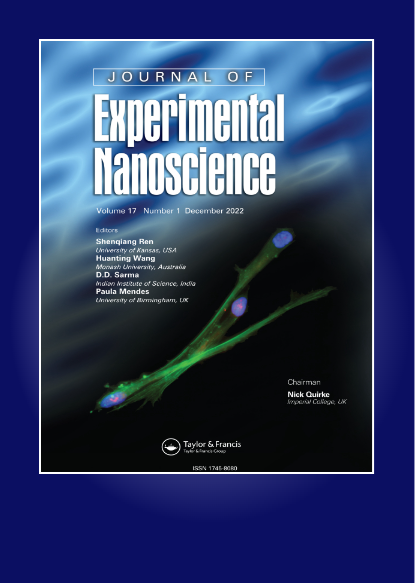Synthesis, crystal structure, hirshfeld surface analysis, molecular docking and molecular dynamics studies of novel olanzapinium 2,5-dihydroxybenzoate as potential and active antipsychotic compound
IF 2.6
4区 材料科学
Q2 CHEMISTRY, MULTIDISCIPLINARY
引用次数: 0
Abstract
Abstract The antipsychotic drug Olanzapine was crystallized with aromatic acid, 2,5-dihydroxybenzoic acid in isopropyl alcohol by slow evaporation which led to the formation of olanzapinium 2,5-dihydroxybenzoate crystalline salt. The structure of the compound was characterized by 1H-NMR, 13C-NMR, and single-crystal X-ray diffraction analysis. The Hirshfeld analyses were performed to quantify the order and nature of intermolecular interactions in the crystal network. Employing computational approaches, the compound was tested for its affinity against antipsychotic activity by molecular docking and molecular dynamic simulation to attest the conformational stability over time step of 100 ns. Besides, bioactivity and ADMET properties were also predicted to ratify the result. The compound asserted neither carcinogenic nor mutagenic activity and has high oral bioavailability. Hence, this synthesized novel compound Olanzapinium 2,5-dihydroxybenzoate recognized in the study possesses high potential as an effective antipsychotic compound, and can further be examined for its efficiency by in vivo studies. The synthesized compound was submitted to NCBI PubChem database using accession substance ID: 441329256. The crystal structure was submitted to CCDC (Cambridge Crystallographic Data Centre) with submission ID: 2010899.新型抗精神病活性化合物2,5-二羟基苯甲酸奥氮平的合成、晶体结构、hirshfeld表面分析、分子对接和分子动力学研究
摘要将抗精神病药物奥氮平与芳香酸2,5-二羟基苯甲酸在异丙醇中缓慢蒸发结晶,得到奥氮平2,5-二羟基苯甲酸结晶盐。通过1H-NMR、13C-NMR和单晶x射线衍射对化合物的结构进行了表征。Hirshfeld分析是为了量化晶体网络中分子间相互作用的顺序和性质。采用计算方法,通过分子对接和分子动力学模拟测试了化合物的抗精神病活性,以验证其在100 ns时间步长的构象稳定性。此外,还进行了生物活性和ADMET特性的预测,验证了结果。该化合物既不致癌也不致突变,具有较高的口服生物利用度。因此,本研究所合成的新化合物奥氮平2,5-二羟基苯甲酸酯作为一种有效的抗精神病药物具有很高的潜力,并且可以通过体内研究进一步验证其有效性。合成的化合物提交到NCBI PubChem数据库,登录物质ID: 441329256。晶体结构提交给CCDC(剑桥晶体数据中心),提交ID: 2010899。
本文章由计算机程序翻译,如有差异,请以英文原文为准。
求助全文
约1分钟内获得全文
求助全文
来源期刊

Journal of Experimental Nanoscience
工程技术-材料科学:综合
CiteScore
4.10
自引率
25.00%
发文量
39
审稿时长
6.5 months
期刊介绍:
Journal of Experimental Nanoscience, an international and multidisciplinary journal, provides a showcase for advances in the experimental sciences underlying nanotechnology and nanomaterials.
The journal exists to bring together the most significant papers making original contributions to nanoscience in a range of fields including biology and biochemistry, physics, chemistry, chemical, electrical and mechanical engineering, materials, pharmaceuticals and medicine. The aim is to provide a forum in which cross fertilization between application areas, methodologies, disciplines, as well as academic and industrial researchers can take place and new developments can be encouraged.
 求助内容:
求助内容: 应助结果提醒方式:
应助结果提醒方式:


